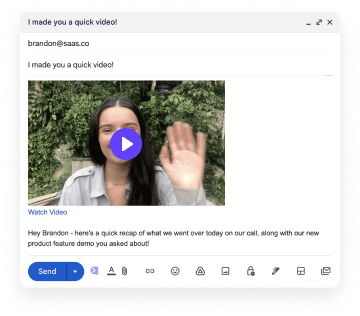While sales and marketing is essential for acquiring new customers, customer success is responsible for making sure those customers are engaged and long-lasting.
What is Customer Success?
With relationship-focused client management, customer success puts client’s and seller’s goals on the same level to accomplish mutually beneficial outcomes.
This methodology is aimed at helping clients be more successful and reach their expected results while using the business’s product or service, or even generally speaking.
This is usually achieved by thinking about all the challenges or questions a customer can have about your product and being proactive about it by providing solutions and answers. It is a data-driven approach to enable customers to use your product or service more effectively for their businesses.
Numerous benefits are seen with using the customer success approach:
- Increased customers’ return and retention
- Increased customer loyalty
- Increased sales and revenue
- Decreased customers’ churn
- Customers become your promoters and advocates
Difference between Customer Success and Customer Support
Even though these two terms sound alike, and to some they might seem very similar, there is a great difference between customer success and customer support.
We all know what customer support means since we all used it at some point - you buy a product and have a problem with it (something doesn’t work, you don’t know how to use it, can’t understand the instructions, etc.). Then you contact customer support (via live chat or contact info) and address them with your problem and wait for an answer on how to solve it. It is a reactive process for a business, as problems, questions, issues, and requests are solved when the clients raise them.
On the other hand, customer success is a proactive approach when a business works together with its clients to help them get more value out of the products or services they bought. The relationship rests on client’s feedback so that their experience with the brand can improve and become better, and so the clients have a successful path in the future.
Difference between Customer Success and Account Management
Just like customer support, account management is reactive and problems are worked on as they arise, on a case-by-case basis. Account managers are responsible for a particular set of dedicated customers - accounts - so they feel satisfied. The idea behind it is to grow accounts so the revenue they bring into the business will grow as well. The approach doesn’t take into consideration how successful the client is.
Customer success is a technique that came after account management, as it is “evolutionally” better. While collecting all problems and issues through the data collected about the customer, this methodology shows opportunities for improvement. The focus is shifted towards the clients (as opposed to the company success), their experience, and lifecycle so their path is guided in the direction to success.
Clients nowadays expect different things than they did only a few years ago, so understanding customers’ wants and needs drive digital transformations.
How Customer Success improves your business
As we mentioned earlier, there are a few advantages when using customer success.
The most important advantage can be seen in SaaS and subscription-based businesses since CS improves the renewal sales process. Instead of focusing on selling their product to many people once, companies are shifting their center of attention to monthly or yearly subscriptions.
And every time a customer gets an email about the subscription payment, they start wondering if they even need the product. That’s why companies need to justify the renewal every month or year and show their clients that their products have value. And CS collects data and shows insights on how to do that by focusing on what drives the success of a business’s customers.
Another aspect of CS is that it takes feedback from clients and compares it and analyzes it together with online reviews. More and more people are leaving online reviews of products and services (don’t forget to show gratitude!), so when a lead is considering whether to purchase an item or not, reviews can play a big role in the decision-making process.
That means that both purchasing and churn decisions happen quite fast. The job of the CS team is to recognize when churn decisions can happen and stop them. Their job is to also collect, analyze, and use the valuable feedback from customers, compare it to other customer data they have, and communicate with the product and development teams to improve their products and services accordingly.
That way, customers’ problems and issues will be resolved even before they occur or before they even know they had those problems and issues.
Customer success also drives revenue, especially when a subscription needs to be renewed. The sales and marketing plan costs that are needed to convert one lead are often even larger than the company will earn from that client, initially. But, the costs of keeping that customer for a longer period, when they will renew their subscription, are much lower than the earnings.
So, the second and every other subscription renewal require a lot less investment, especially with customer success efforts.
Customer Success Team
A customer success team can be quite big or a small one, depending on your business possibilities.
You can hire a team of people to focus solely on CS, or make a team out of your employees from several teams and make them work together for a few hours a day.
Ideally, CS teams include people who are involved in product development (so they can create products and tools people really need and want), marketing (so they can find and bring quality leads), and sales (so they can position the product effectively).
The customer success team includes the following roles:
- Sales engineers
- Software engineers
- Customer support representatives
- Customer success managers
- Training/learning representatives
- Upsell and cross-sell representatives
This diverse team can effectively collect, analyze, and use data to drive customer experience towards success.
How to implement Customer Success?
Even though implementing customer success methodology includes only three steps, you shouldn’t rush the process so you can make the best possible decisions.
First, you will need to choose customer success tools and solutions.
You will have a ton of data you will need to group and understand, but you will also need to connect the tools and solutions to your CRM software and your product. The solution will start tracking product user activity and CRM inputs, analyze the data it received, and, ultimately, show you trends, send reports, and even make predictions.
Your CS team can even add quality information, like conversations, reviews, phone calls, emails, etc.
For instance, many email marketing tools allow you to integrate with CRM systems, therefore logging all activity of emails that are sent directly or automated emails and the responses your customers gave.
You may also want a video platform for customer success to send welcome videos and video emails to customers at key points to drive activation, retention, or product usage.
Having this level of integration and information is crucial to properly deploy strategies in customer success.
Secondly, you will need a team of people who will be in charge of the CS process. The team should grow as your business grows, so starting off small and frugally is also an ok start.
Thirdly, together with your CS team, you need to create a customer success strategy. Every company and business niche has its own target group, with different needs, wants, and habits. So, creating a CS strategy can include various steps, depending on the characteristics of the customers, but here is a general plan on how to do it:
- You need to find out what your target group’s end goals are and what they believe is a success.
- Think about what is customer success in the short term and long term.
- Create a success roadmap, so you can define your business’s expectations and goals.
- Define the roles and responsibilities in the CS team, according to the success roadmap.
- Create tools, training, and resources for customers to help them use your product.
- Implement the strategy.
- Stress CS strategy all throughout your company.
- Track key metrics, such as:
- Repeat purchase rate
- Retention rate
- Churn rate
- Satisfaction score
- Lifetime value
- Define and track red flags
- Analyze the results.
- Evaluate the results.
- Make modifications to your CS strategy.
Together with these steps, communication with other teams in your company is also crucial, so you can find out more details and pain points of your target group or insights from your employees.
Wrapping up
Even though it can seem that customer success isn’t that much different from the widely used practices of customer support, the difference is there and the leads and clients can feel it.
You might think that changing the focus from your company’s benefits to client’s benefits clients won’t really notice, but you are mistaken.
Build trust with your target audience by offering them resources on how to use your products, showing them who are the people behind your company, crediting content creators, and using all the resources and data you can to make their experience with you seamless.
They might not know how to put it in words, but your clients have a lot of experience buying all sorts of things. And they’ll remember when they felt great, respected, treated as you are there for them, and as you care about how they are doing and if they are using the greatest potential of your product to be successful.




